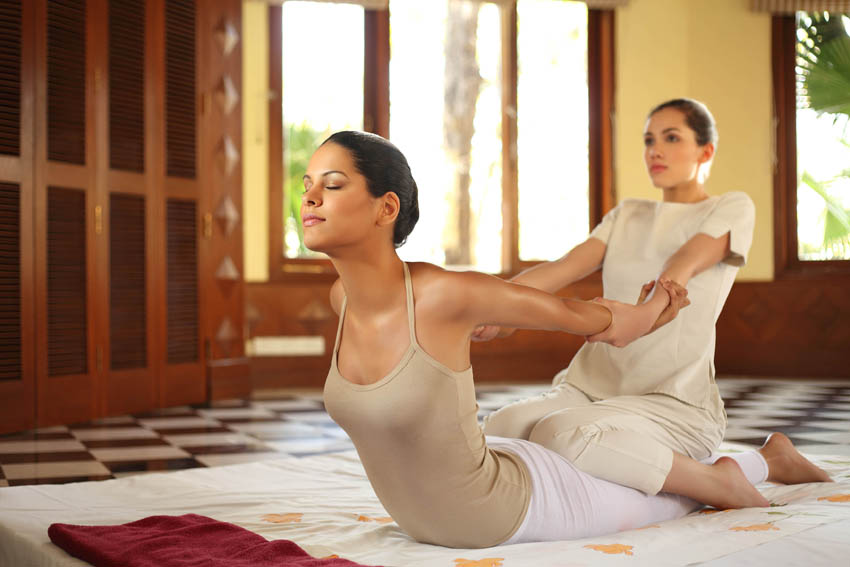Thai Massage, the haul & shove of Pain Management
Thai massage respects the body’s limits, encourage clients to reach their edge of flexibility. Thai Massage blends elements of acupressure, yoga, reflexology, physiotherapy, meditation, energy healing, chiropractic and ayurveda. Thai massage uses acupressure, massage, and passive-assisted stretching, where therapists help clients move into their stretch. It will increase flexibility, blood circulation and energy flow; removal of toxins; reduction of stress and pain. The work is purposely slow as the massage therapist guides clients through the movements, being ever mindful of their physical limitations. People say the combination of moves and focused awareness during a Thai Massage session creates a slow, flowing dance between practitioner and client.
Thai Massage is performed on soft floor mat, with clients fully clothed in loose, comfortable attire suitable for the deep stretching that will be part of the session. Some therapists use pillows and bolsters for better client support. This form of bodywork can utilize tai chi, rocking and rhythmic motion, massage, and assisted stretching. Therapists may use their hands, feet, knees, elbows, and legs to facilitate the process. No massage oil, massage gel or massage lotion are used during these sessions.
The benefits of Thai Massage are countless. Due to physical or emotional trauma, bad posture, injuries, or limiting belief systems, this energy can get trapped or blocked, causing physical and emotional dis-ease. Thai massage with its amazing multitude of techniques and adjustments can release these blockages and bring the body back to its natural equilibrium, where perfect balance and wellbeing are present. By freeing the flow of vital energy in the body, Thai Massage can improve posture, breathing, flexibility, digestion and circulation. A deep sense of peace can be experience during and after a treatment.
The main emphasis in the practice of Thai Massage is usually on health prevention, it can also be of great therapeutic benefit for a range of specific problems and conditions, such as headaches, back pain, digestive disorders, shoulder and neck tension, joint pain, menstruation problems, insomnia and other stress related conditions. Thai Massage also helps to heighten energy levels, improve body-mind connection, improve range of motion and increase flexibility. Experts say there is an interesting dichotomy with Thai Massage, as it both relaxes and rejuvenates. After the session some clients report feeling awakened and energized, while some also feeling deeply grounded and at peace.
Thai Massage is based on an energetic paradigm of the human body and mind. In this tradition, energy is thought to travel on pathways, called sen, throughout the body.
Through the movement and massage components, the goal in Thai Massage is to make sure energy is gracefully moving freely along these pathways as a means for wellness.

